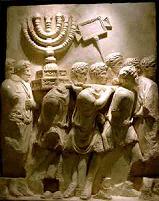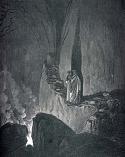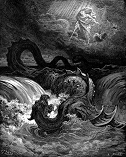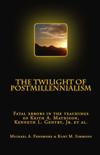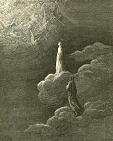Kurt's Response to Don's Argument from
Rom. 11:25-27 - Part I
In this article I interact with Don Preston’s arguments based upon Romans Eleven, as appeared in the Summer edition of “Fulfilled Magazine” (Vol. 4, Issue 2).
Don’s a great guy and good friend. He is also a top notch debater. However, I sometimes find I disagree with the arguments he puts together. That is certainly the case with his arguments built on Romans Eleven, which strike me as incorrect. The following is offered in the spirit of brotherly discussion.
In the Summer edition of Fulfilled Magazine, Don responded to a common objection against the AD 70 second coming of Christ that Romans 11:26 teaches “all Israel” (ethnic Jews) would be saved at Christ’s second coming; but all Israel was not saved in AD 70, therefore, AD 70 was not Christ’s second coming.
There are several ways to refute this argument. First, the notion that “Israel” refers to ethnic Jews is assumed but never proved. Don proceeds upon the assumption this is correct and argues accordingly. However, I believe this is questionable, if not doubtful. In Romans 9:6-8, Paul states
“they are not all Israel, which are of Israel: neither because they are the seed of Abraham, are they all children: but, in Isaac shall thy seed be called. That is, They which are the children of the flesh, these are not the children of God: but the children of the promise are counted for the seed.”
Here, Paul defines “Israel” spiritually as children of faith under the New Testament. Since Gentiles together with ethnic Jews are equally counted for the seed in Christ (Gal. 3:28, 29), they too are “Israel” (Gal. 6:16; Eph. 2:19-22). Given this definition provided by the apostle of “Israel” in chapter nine, when we arrive at Paul’s argument in chapter eleven regarding God’s salvation of “all Israel” by the coming in of the Gentiles, it seems clear that he means us to understand, not that all ethnic Israelites, but that all spiritual Israel would be saved by the gospel.
Don seems to miss this entirely and proceeds upon the assumption that “Israel” is national or ethnic Jewry. He then attempts to defeat the argument by qualifying “all” to consist of only the “elect” from the Jews, or 144,000. Thus, “all” doesn’t mean “all,” only the “elect.” But if the elect is a spiritual seed (which Don concedes), then “all spiritual Israel” must include the Gentiles. This is the point of the illustration of the Olive tree (Rom. 11:16-26). The tree symbolizes God’s spiritual people (Israel), who are the branches; Christ is the root that supports the whole. The unbelieving Jews were broken off and believing Gentiles were grafted in. In saving the tree, consisting of both Jews and Gentiles, all Israel would be saved. Paul hoped that the grafting in of the Gentiles would provoke his countrymen to jealousy and repentance that they too might be grafted back in, but this would merely add back them into “all Israel” not define its limits. In a word, “all Israel” (the olive tree) is not ethnic Jews, but men of every race and language that come to Christ in faith.
Second, the argument Don attempts to refute assumes that “all Israel will be saved” signifies an en masse conversion of ethnic Jews living at a particular point in history (viz., the time of Christ’s second coming). Christ will return and all Jews living will convert to Christ, “and so (thus) all Israel will then be saved.” Don rejects the idea of an en masse conversion, arguing instead (as shown above) that only the elect 144,000 from ethnic Jewry are in view. But he accepts as valid the assumption that the salvation in view speaks to a salvation to be fulfilled at Christ’s second coming. In other words, Don and his opponents both agree that the saving of “all Israel” is limited to a particular window in history, then the passage will cease to have further application. This is the inevitable view of all who see “all Israel” in ethnic terms. For once the whole body of ethnic persons indicated is saved, the prophecy will be fulfilled. And this is true regardless of who we think is identified, whether all the Jews or only the elect, first generation Jews. Either way, once that ethnic group has been “saved” the passage is fulfilled and ceases to be applicable.
However, we believe the notion that the prophecy is limited to a particular historical referent is wrong. The tree of God’s people (Israel) has not ceased to exist. Hence, the salvation of “all Israel” has not been accomplished but will continue as long as time endures. This is what the prophets meant when they said “of the increase of his government there shall be no end” (Isa. 9:7). Because spiritual Israel will continue to expand and grow as men convert to Christ, the government of Christ will forever grow and increase. “All Israel” will be saved by the grafting in of believers as long as God is pleased for the earth to endure. It is true, course, that our salvation was accomplished by the once-for-all act of the cross, but that is not Paul’s point. Paul is not speaking about a particular act in history that would accomplish men’s salvation, but the process by which men are added into spiritual Israel and so are saved.
This leads to the next issue. The third assumption underlying the argument about “all Israel” is that Romans eleven is a “second coming” passage. Although Don places it in the past, Don agrees with the basic assumption that the second coming is in view. Rom. 11:26, 27 states:
And so all Israel shall be saved: as it is written, There shall come out of Sion the Deliverer, and shall turn away ungodliness from Jacob: For this [is] my covenant unto them, when I shall take away their sins.
For Don, the “Deliverer coming out of Zion” refers to the second coming. However, the passage is ambiguous. Certainly, there is nothing about “coming out of Zion” that requires we understand it in reference to the second coming as distinguished from his first coming to die upon the cross. In fact, I believe the latter is intended and is the more defensible (more on this later). For Don, proof that the second coming is in view lies in the source of the passage from the prophet Isaiah. The first is Isa. 26:21:
For, behold, the LORD cometh out of his place to punish the inhabitants of the earth for their iniquity: the earth also shall disclose her blood, and shall no more cover her slain.
The first part of the above (Isa. 26:21) Don ties to the vengeance of the martyrs announced by Christ in Matt. 23:34-39. He justifies this on the basis that Isaiah says the earth will no longer disclose its blood. In other words, the Lord is coming forth to avenge blood; blood signifies martyrs; Jesus said Rome would destroy Jerusalem in vengeance of earth’s martyrs, therefore, Isaiah is talking about the AD 70 destruction of Jerusalem. However, this argument fails to account for the fact that there have been many comings of the Lord, many days of the Lord, and that to avenge innocent blood. Specifically, the opening chapters of Ezekiel describe the prophet’s vision of the Lord’s coming in vengeance and judgment upon Judah in the days of the Babylonian captivity. The vision describes the Almighty coming in a cloud, a fire enfolding itself, seated upon a throne, borne by cherubim. The prophet was shown visions of things in the heavens, but on earth what men would have seen is the armies of Nebuchadnezzar invading Judah and besieging Jerusalem. This is clear from Jeremiah who describes the same coming of the Lord, saying, “Behold, he shall come up as clouds, and his chariots [shall be] as a whirlwind: his horses are swifter than eagles. Woe unto us! for we are spoiled” (Jer. 4:13; cf. 1:14, 15) And that this coming and judgment under Nebuchadnezzar was to avenge innocent blood is expressly declared by II Kings 24:1-4; Isa. 59:7.[1]
The second verse Don relies on is Isa. 27:9:
By this therefore shall the iniquity of Jacob be purged; and this [is] all the fruit to take away his sin; when he maketh all the stones of the altar as chalkstones that are beaten in sunder, the groves and images shall not stand up.
Paul loosely quotes or alludes to the first half of this verse in Romans 11:27, when he says “For this [is] my covenant unto them, when I shall take away their sins.” Paul makes no reference to the altar stones being pulverized to dust, but Don imports it into Romans 11:27 just the same, taking it in reference to AD 70. However, a close reading of Isa. 27:9 shows that this passage is not talking about AD 70 at all. Rather, like much of the material in the surrounding chapters, it is talking, at least in the first instance, about the coming judgment against Israel and Judea by the Assyrians and Babylonians.
Proof is seen in the fact that in AD 70 Israel did not have groves and images. This was a sin peculiar to the pre-Babylonian captivity nation. After their return from captivity, the nation never fell into idolatry again. Reference to groves and images by Isaiah signifies that the judgment under Assyria and Babylon is in view, not AD 70. Therefore, application of Isa. 27:9 to AD 70 must be rejected upon its face. Further proof appears from the fact that Israel’s national sin was purged by her captivity under Assyria and Babylon. That is the meaning of Isaiah’s statement that her sin would be purged by the destruction of her altar, idols and groves. Isaiah therefore clearly has national Israel in view, but Paul cites the verse in reference to spiritual Israel, the church. The nation would have its sin purged by exile and captivity in Babylon, the church by the coming of the Deliverer. Paul therefore makes the loosest, most general use of the passage to show God’s forgiveness of his people. And Paul does not attach that forgiveness to the destruction of Jerusalem as Don suggests, but to the coming of the Deliverer to die upon the cross. The historical context shows that the passage in its first instance addressed the Assyrio-Babylonian captivity, not AD 70. Once she had paid “double for all her sins” (Isa. 40:1, 2), God would bring Israel again into the land, and complete her spiritual salvation by the birth of Christ (his coming out of Zion – Isa. 59:7) and his death upon the cross to redeem his people from sin. The idea that Israel’s sin was purged in AD 70 by destruction of the city and temple is, in our estimation, a dangerous doctrine that has its source in Max King.
The idea that Rom. 11:26, 27 (and hence Isa. 27:9 and 59:7) is an AD 70 “second coming” text first originated with Max King (at least in preterist circles).[2] King teaches a bi-furcated redemption which holds that Israel was in the “grave of Judism” under the law of Moses, but was figuratively “resurrected” in AD 70 when the law was taken away.
“Resurrection has reference many time to the change from the Jewish system to the Christian system, where the material body of Judaism is put off in death and the spiritual body of Christianity is resurrected in life...Paul wanted to attain unto the resurrection of the dead (ek nekron, out of the dead) or from among the dead as represented in the Jewish system.”[3]
This is King’s highly imaginative “corporate body” view of the resurrection. It is closely tied to his view about the vicarious salvation through the “first fruit Jews.” The “firstfruits” hold special place in King’s eschatology. According to King, there is an “organic bond” between members of the first generation Jews and the “rest of the dead” that serves to sanctify the latter, thereby vicariously conferring upon them the benefits of Christ’s redemptive work.
The “formation of the body of Christ from Pentecost till the end of the age (through dying and rising with Christ) answers to the first resurrection. This represented resurrection ‘out from among the dead,’ for the purpose of bringing about the covenantal change that would have the effect of bringing to life “the rest of the dead” (i.e., the faithful members of the Old Covenant community).”
King believes that “baptism for the dead” (I Cor. 15:29) by firstfruit Jews provides the vicarious justification of the Old Testament dead:
“The destiny of historical Israel was bound up in the remnant and their response to the Christ-event…Were it not for the response of the baptized remnant or firstfruit Jews to the power of God through Christ, Israel would have been left to perish.”[4
Thus, King teaches that apart from the baptism of the “firstfruit Jews” Old Testament Jews could not be saved! In King’s words, except for the vicarious benefits of the New Testament Jews, Old Testament Israel would have been left to perish! King has since expanded this idea of vicarious, corporate body justification (resurrection) to include the whole body of mankind. In a word, King has apostatized from the gospel and now teaches Universalism.[5]
“In the new world people are reconciled to God without any say in the matter. God loves all those that He has made in His image equally... Today we are people within a reconciled humanity”[6]
This is a logical corollary of King’s teaching that the Mosaic law was the universal source of mankind’s condemnation, so that by its removal, all men are saved.
“One must look to the Jewish system as the state and power of death to be destroyed by the reign of Christ.”[7]
Judaism is the state and power of death?![8] The connection between the belief that the law had to be removed before men could be saved (justified) shows up for King in the statement by Isaiah that in crushing the altar stones man’s sin would be purged and the remnant saved. In other words, salvation required more than Christ’s cross; the law had to be removed before man could be fully justified. This is a dangerous error.
The cross triumphed over the law (Col. 2:14, 15). The law of Moses merely codified the moral commandments that existed from the garden, adding certain ceremonial rites to them for purposes of showing the need of blood to atone for sin and to point to the coming of Christ. Codification of the moral law by Moses added nothing in terms of condemning mankind for sin that did not already exist. Adultery, murder, and theft were sins before Moses, and they are sins now. Removal of the ceremonial law of Moses bound up in the temple ritual did not take away the moral law or justify man from sin. The moral law still condemns man of sin today. Outside of Christ, all men are under the power of sin and death; each man is condemned for violation of the moral law written in his own heart and conscience (“the just shall live by faith”). Since men are under the power of death by virtue of the moral law, it is clear that that power did not begin or end with Mosaic law. Hence, the law’s removal did not justify man or bring about a resurrection of any sort.
To summarize, the long and short of King’s system, if accepted, is that mankind was universally condemned by the Mosaic law, and universally justified by its removal, and this is the eschatological resurrection.
However, as it is the moral law that condemns mankind, not the Mosaic law, and inasmuch as the moral law still exists, removal of the Mosaic law was no part of man’s justification, and did not accomplish his eschatological resurrection. Therefore, destruction of Jerusalem in AD 70 is irrelevant to man’s soteriological perfection. The cross is complete standing alone.
What this has to do with the subject before us is that for King, man’s salvation is tied to removal of the law at the destruction of Jerusalem at Christ’s second coming. This is why he views Rom. 11:26 as a second coming text: Israel’s salvation (justification/resurrection) was not in Jesus’ coming to die on Calvary, but the destruction of the temple and abolition of the Mosaic law. However, inasmuch as this is clearly a false notion, the view that Rom. 11:26, 27 is a second coming passage should be rejected too.
The Deliverer’s coming out of Zion to purge sin from Jacob was when Jesus was born to the virgin, and died upon the cross under Pontius Pilate. This is Paul’s meaning. Romans eleven is NOT a second coming text.
[1] We do not disallow entirely the possibility that there is a plenior sensus to Isa. 26:21 that may look beyond its historical setting to Christ’s second coming. We merely point out that Don’s argument has not proven that this is so.
[2] Spirit of Prophecy (Warren, OH, 1971), pp.215; McGuiggan –King Debate (Warren, OH), pp. 250-253; 268.
[3] Spirit of Prophecy (Warren, OH, 1971), pp.191, 194.
[4] Max R. King, The Cross and the Parousia of Christ, pp. 489, 490
[5] We should be very clear that Don is a faithful gospel minister, and does NOT believe in Universalism.
[6] From an article posted on King’s site. David Timm, Grace Upon All, October 2006.
[7] Max R. King, The Spirit of Prophecy, p. 144.
[8] Some Calvinists substitute imputed Adamic sin as the universal source and power of death. Both systems lead to Universalism. (Timm quote)
To receive Kurt Simmons’ e-mail newsletter, The Sword & The Plow, click the Subscribe link:
All rights reserved.
